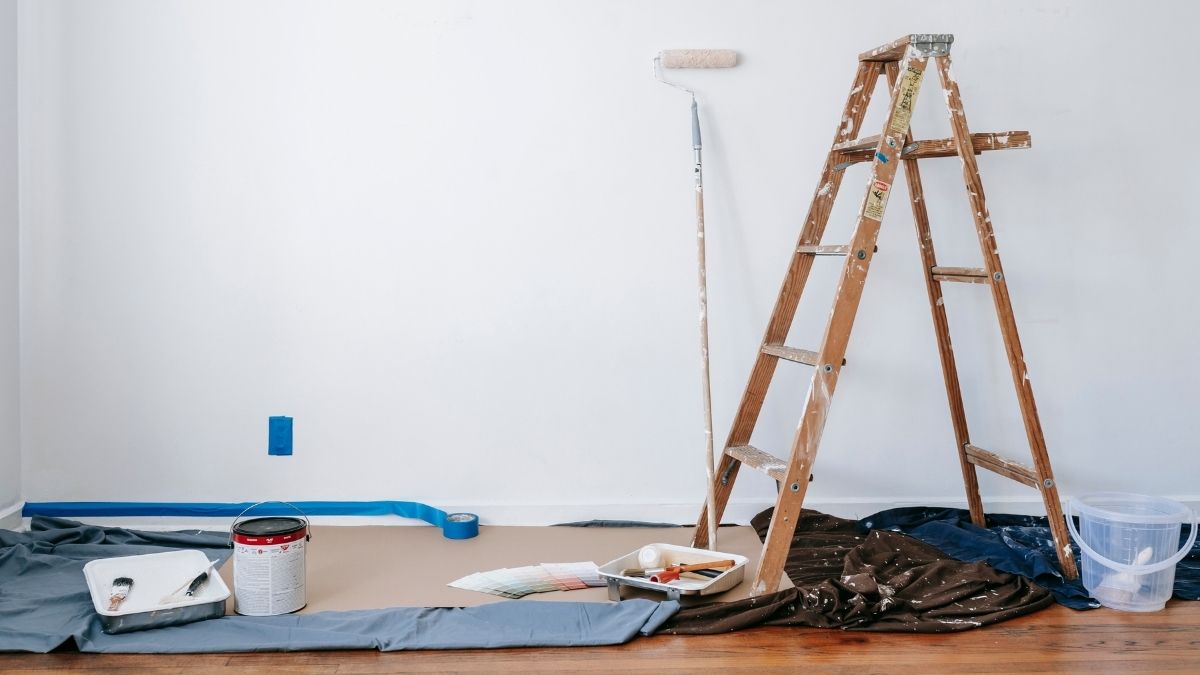
A fresh coat of paint can completely transform a home, but achieving a flawless finish requires more than just skilled painters and quality materials. Proper preparation before the professionals arrive makes all the difference in ensuring a smooth process and a long-lasting result. Homeowners who take the right steps in advance not only help speed up the work but also contribute to a better finish. Here’s how to get your home ready for a professional paint job.
Decluttering the Space and Protecting Belongings
Before the painters start, it's essential to clear the area as much as possible. Removing furniture, wall décor, and any fragile items allows for easy access to walls and ceilings, preventing potential damage. If moving everything out of the room isn’t feasible, shifting furniture to the centre and covering it with dust sheets works well. This ensures that paint splatters don’t ruin upholstery or delicate surfaces. Curtains, blinds, and rugs should also be taken down or covered to protect them from dust and accidental splashes.
Cleaning Walls and Surfaces
Paint adheres best to a clean surface, so any dust, grease, or stains should be dealt with beforehand. Kitchens and bathrooms, in particular, tend to accumulate grime that could affect paint application. A simple solution of mild detergent and warm water is usually enough to remove most surface dirt, while stubborn stains may need a specialised cleaner. Once washed, walls should be left to dry completely before any painting begins.
Addressing Repairs and Damage
Small imperfections such as cracks, dents, or peeling paint can affect the final result. While professional painters will often carry out minor repairs as part of their service, homeowners can save time by identifying and addressing these issues in advance. Filling holes left by picture hooks or nails, sanding rough patches, and replacing damaged plaster where necessary ensures a smoother finish. This step is especially crucial in older homes where wear and tear is more pronounced.
Ensuring Proper Ventilation
A well-ventilated space helps paint dry efficiently and minimises the build-up of fumes. Opening windows and doors improves airflow and speeds up the curing process. If painting is planned for colder months, checking that heating can be adjusted to help maintain an appropriate drying temperature is beneficial. Proper ventilation not only enhances the outcome but also ensures a safer environment for those in the home.
Confirming Paint Choices in Advance
A professional paint job is a significant investment, so finalising colour and finish choices before work begins avoids last-minute decisions and delays. Testing sample patches on the walls in different lighting conditions helps homeowners feel confident in their selection. Once a choice is made, confirming it with the painting team ensures the correct products are ordered and ready for application.
Providing Easy Access to the Work Area
Painters need space to work efficiently, so clearing pathways and ensuring access to all rooms being painted is important. Moving personal items out of the way, keeping pets in another part of the house, and making arrangements for children to be elsewhere during painting hours can prevent interruptions. This allows the team to focus on the job without unnecessary distractions.
Discussing Expectations with the Painters
Good communication with the painting team helps set clear expectations. Discussing timelines, preferred working hours, and any specific requirements in advance prevents misunderstandings. If there are areas that need extra attention, mentioning them beforehand ensures they are included in the plan. A brief walkthrough with the painters before they begin allows both parties to confirm details and agree on the best approach.
Checking External Conditions for Exterior Painting
If the project involves exterior painting, weather conditions play a key role in achieving the best results. Heavy rain, extreme cold, or strong winds can interfere with paint application and drying times. While professionals monitor the forecast and adjust schedules if needed, homeowners should also be aware of how changing conditions may impact the project. Ensuring gutters are clear and trimming back any overgrown plants near the walls provides the painters with unobstructed access.
Allowing Enough Time for the Process
Quality paintwork takes time, and rushing the process leads to poor results. While professional painters work efficiently, drying and curing times must be factored in. Depending on the type of paint used and the number of coats required, some areas may need to remain untouched for a day or two before being fully functional again. Being realistic about timelines and allowing extra time for the best finish ensures a stress-free experience.
Final Walkthrough and Inspection
Once the painting is complete, a final walkthrough with the painters helps address any touch-ups or concerns before the project is signed off. Checking corners, edges, and high-traffic areas for any inconsistencies ensures a perfect finish. If there are any areas that require minor adjustments, noting them immediately makes it easier for the team to correct them before they leave.
A professional paint job not only enhances the appearance of a home but also adds to its durability and value. By preparing properly before the work begins, homeowners contribute to a seamless process and a flawless result that lasts for years to come.
FAQs
How long should I wait before putting furniture back after painting?
It’s best to wait at least 24 hours before moving furniture back into place. Some paints may take longer to cure fully, so checking with the painters on drying times helps avoid smudges or marks.
Will I need to be home while the painters work?
Not necessarily. Many professional painters work independently, but being available at the start and end of each day to check progress and answer any questions can be helpful.
Do I need to provide any materials or equipment for the painters?
Professional painters bring their own tools, brushes, and ladders. However, if there are specific paint brands or finishes you prefer, discussing this beforehand ensures they use the right products.

 Log in with Facebook
Log in with Facebook 









